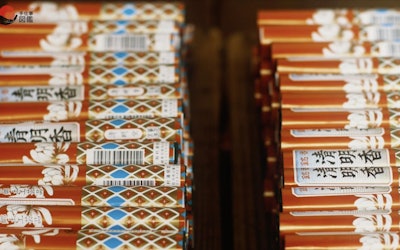Enjoy Japanese Kimono Culture With "Yuki Tsumugi," a Traditional Japanese Craft! The Beautifully Designed and Supremely Comfortable Kimonos, Made by Hand With Time and Care, Are Truly Luxurious!
Traditional Crafts
What is Yuki Tsumugi?
This video was created by "Japan Traditional Crafts Aoyama Square."
It's titled "TEWAZA Yuki Tsugumi Textile" (手技TEWAZA「結城紬」Yuki Tsumugi Textile), and it introduces how the traditional Kimono "Yuki Tsumugi" is made.
Yuki Tsumugi kimono are known as a high-quality Japanese textile.
It is mainly produced in the Kanto region, in places like Ibaraki Prefecture and Tochigi Prefecture.
This high quality textile is made of pure silk, a fabric loved by customers due to its softness and how light it is.
There are many different designs as well, from simple plain designs, to elegant patterns requiring an incredibly skilled artisan.
Being made from natural materials, Yuki Tsumugi kimono are incredibly comfortable and keep you warm even during the colder months of the year.
This video shows viewers how Yuki Tsumugi kimono are made.
The skilled techniques of the craftsman are also shown in the video; be sure to follow along!
The Traditional Craft, Yuki Tsumugi: History
Source :YouTube screenshot
The origin of Yuki Tsumugi kimono dates back more than 1,300 years.
By the Nara period (710-794), Yuki Tsumugi kimono were already being given as gifts to the imperial court as a specialty of the Hitachi Province (current day Ibaraki).
Some of the original Yuki Tsumugi kimono are still safely kept at the Shosoin Repository in Nara.
In the Muromachi (1336-1573) and Edo Periods (1603-1868), the tradition of Yuki Tsumugi was protected, cultivated and passed on as tradition by the Yuki family.
Yuki Tsumugi was also registered as an Important Intangible Cultural Property in 1956 and as a traditional craft in 1977.
The Traditional Craft, Yuki Tsumugi: How It's Made
Source :YouTube screenshot
In Ibaraki and Tochigi prefectures, the home of Yuki Tsumugi kimono, silk has been used for hand woven textiles since ancient times.
1. Silk Floss Making (0:30)
2. Hand-spinning (1:27)
Hand-spun yarns are spun from a material called true cotton, which is made by gently boiling silkworm cocoons. This is what is so special about Yuki Tsumugi.
In the video at 0:53, one of the Yuki Tsumugi craftsmen explains that a single layer of kimono is made using 2200 cocoons, and the total length of the silk yarn is 30 km (nearly 10,000 ft).
3. Tying yarn to make patterns (1:53)
The part tied with a thread will remain undyed and will be left as a pattern.
4. Dyeing yarns by beating (2:35)
Beating the silk in this way allows the dye to sink into the fabric more deeply.
5. Hand weaving (3:12)
The crucial component here is waist strength, as this will determine the texture of the final product.
The threads are woven tens of thousands of times to create beautiful patterns.
Purchasing the high quality Yuki Tsumugi
Yuki Tsumugi kimono and obi have a quality unlike any other textile and are very popular items.
Not only brand new Yuki Tsumugi, but also used Yuki Tsumugi kimono can be quite expensive.
An official Yuki Tsumugi kimono comes with a certification stamp with a design of a woman hand spinning using silk cocoons.
If you're not sure whether you're buying the correct item, check the certificate stamp and you'll know whether it's a luxury Yuki Tsumugi kimono or not.
The Traditional Craft, Yuki Tsumugi: Summary
Photo:A Woman in Kimono
In Japan, the beautiful culture of kimono has been around since ancient times.
What you see in the video is one of the most expensive and popular kimono, Yuki Tsumugi.
It's very rare to see actual footage of how Yuki Tsumugi kimono are made.
If you're interested in learning more about kimono, be sure to visit Japan and try on a high quality Yuki Tsumugi kimono!
【Official Website】Honba Yuki Tsumugi, Okujun Co.,Ltd.
http://www.okujun.co.jp/english/
【Official Website】Japan Traditional Crafts Aoyama Square
https://kougeihin.jp/en/
 Video article 5:50
Video article 5:50 Video article 4:35
Video article 4:35